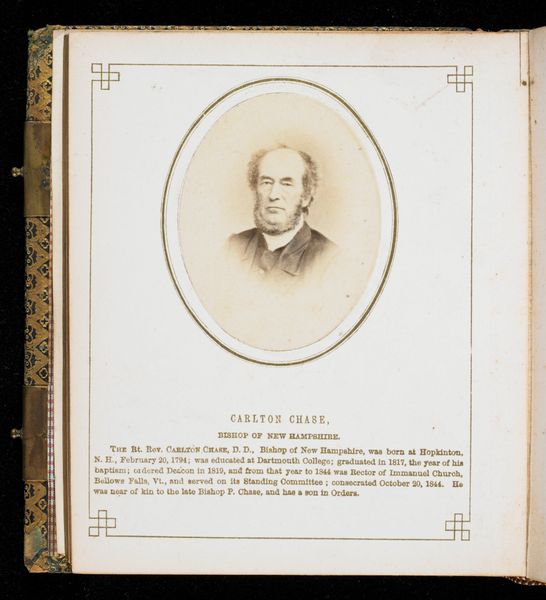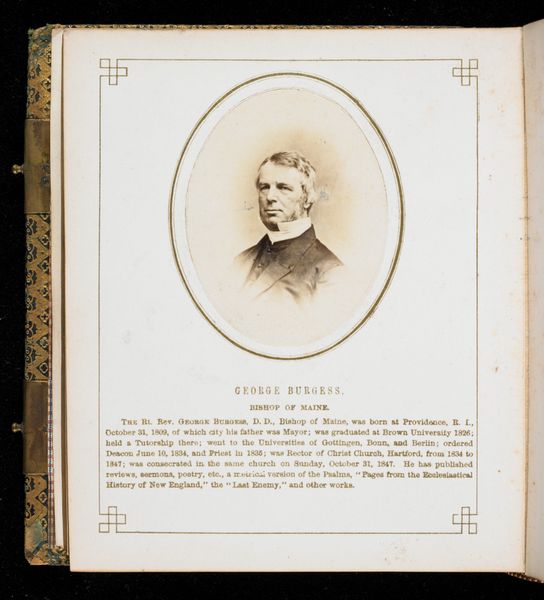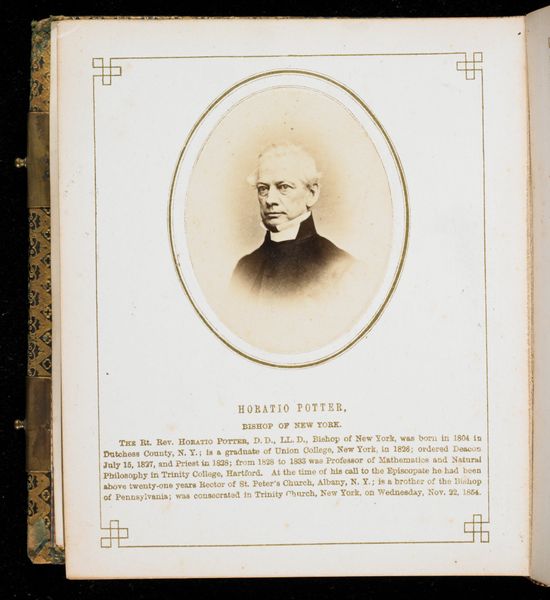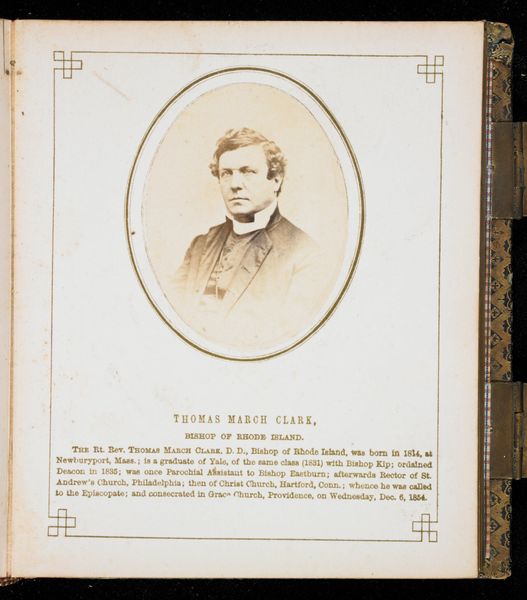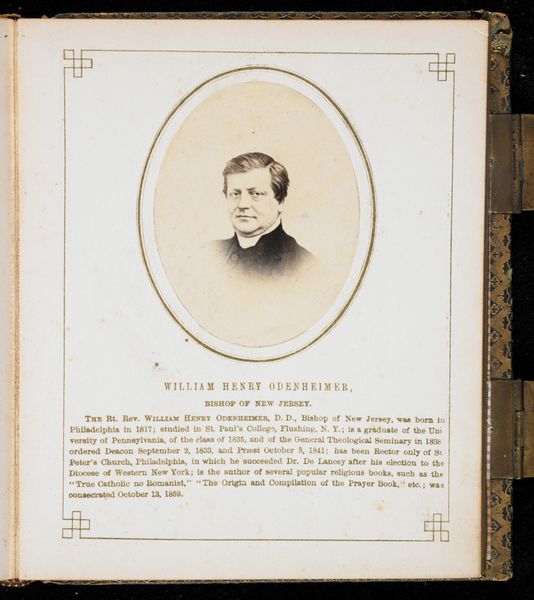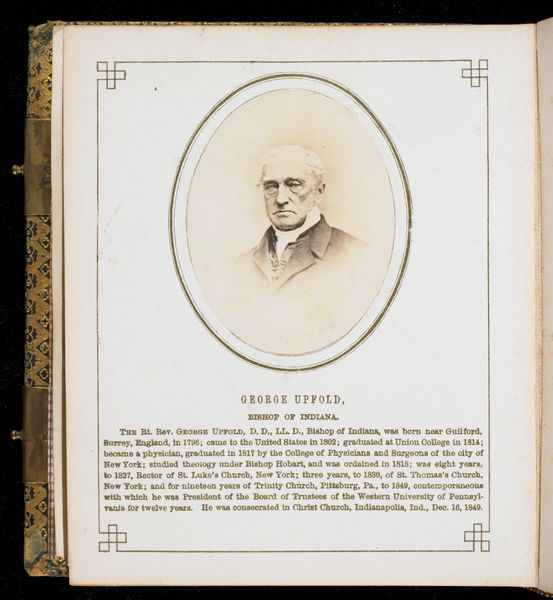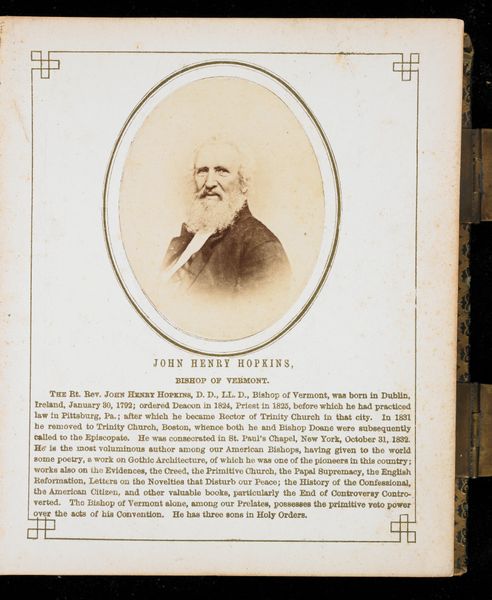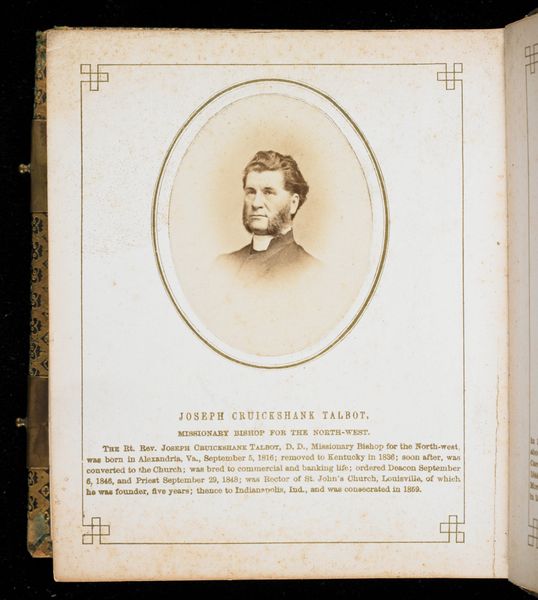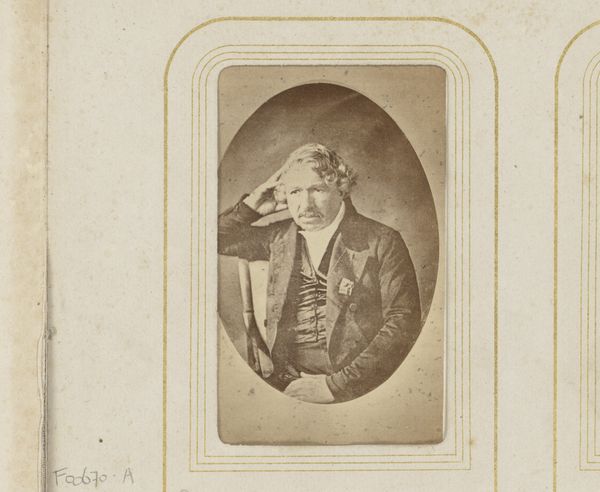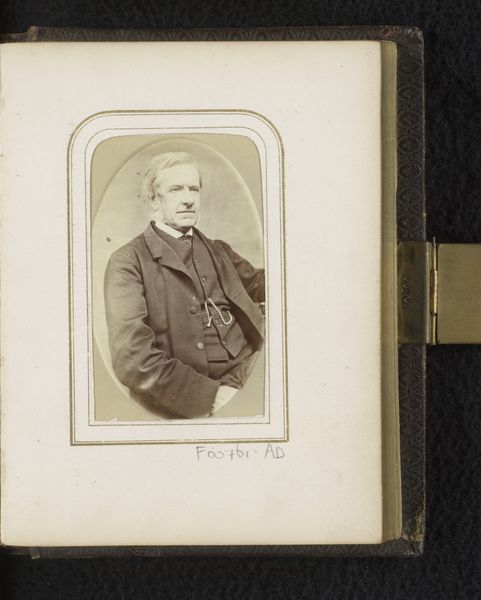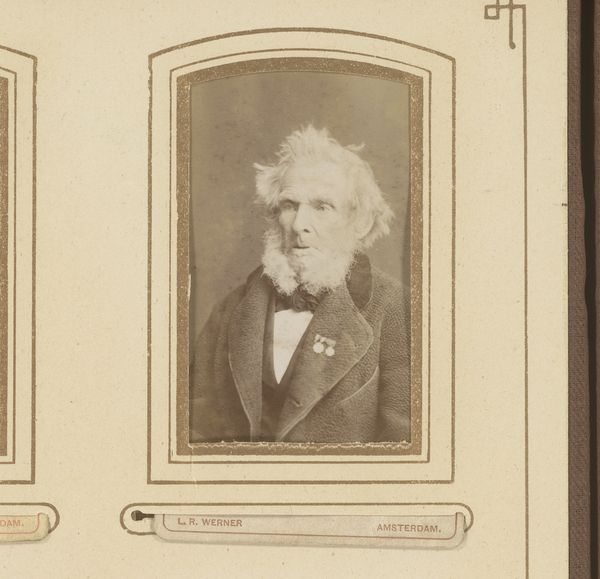
albumen-print, print, photography, albumen-print
#
albumen-print
#
portrait
# print
#
photography
#
united-states
#
academic-art
#
albumen-print
Dimensions: 2 3/4 x 2 1/8 in. (6.99 x 5.4 cm) (image)5 3/4 x 4 3/4 in. (14.61 x 12.07 cm) (mount)
Copyright: Public Domain
Curator: Here we have an albumen print portrait of Henry Washington Lee, Bishop of Iowa, created in 1862 by Jeremiah Gurney. What strikes you most about this piece? Editor: It has such an intimate quality, even though it is a print, and therefore, probably widely distributed. The framing within the book format gives a very private feel. I'm also intrigued by the combination of the photograph with the printed text, especially considering its materials. How do you interpret this work? Curator: From a materialist perspective, I am drawn to the albumen print process itself. Imagine the labor involved: coating the paper, exposing the image, using egg whites for that distinctive sheen. The choice of albumen, readily available and relatively inexpensive, speaks volumes about photography’s democratization at the time. Editor: So you see the print not only as an image, but also an indicator of the era’s production means? Curator: Precisely. The creation of this portrait was not merely about capturing an individual likeness. It involves a complex social and economic network surrounding photography at this moment. How was Gurney's studio staffed? Where did they get their materials? These factors inform the reading of the portrait itself. The accompanying printed text then serves to further define and perhaps sanctify Lee, and speaks to both mass manufacture, but perhaps some degree of customization? The labor is in the hand-setting. Editor: That really shifts my focus from simply admiring the Bishop to considering the print as a manufactured item reflecting the society it came from. I never thought about it that deeply before! Curator: Considering the conditions of production can reshape our entire understanding of art, encouraging us to acknowledge labor and context. It's not only the bishop, but also the person producing this work, and the system that it comes from. Editor: So, by analyzing the materials and production, we uncover deeper meanings in a seemingly simple portrait? Curator: Exactly! It provides insight into the social forces at play in 1862, not to mention how value is determined and ascribed through cultural outputs.
Comments
No comments
Be the first to comment and join the conversation on the ultimate creative platform.
